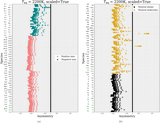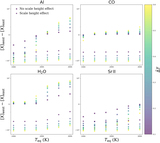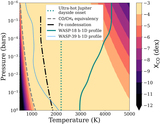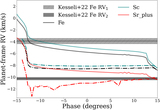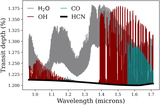Image Details
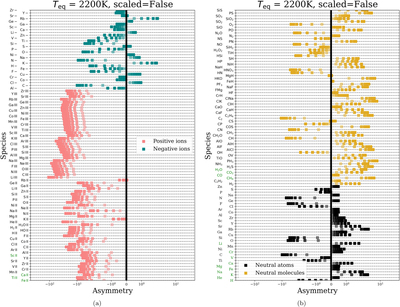
Caption: Figure 1.
Asymmetry (as defined in Equation (1)) of all chemical species considered in this study in our parameterized atmospheres at an equilibrium temperature of 2200 K. These models do not self-consistently inflate the hotter limb of the parameterized model (i.e., they do not observe the scale height effect). The shading of each species represents the normalized temperature difference, ﹩\tilde{{\rm{\Delta }}}T﹩, across the two limbs of our parameterized atmospheres; the lightest boxes have ﹩\tilde{{\rm{\Delta }}}T=0.1﹩, whereas the darkest have ﹩\tilde{{\rm{\Delta }}}T=0.6﹩. For illustrative purposes, we color in green tick marks for species with detections noted in Guillot et al. (2022) (and including the recent CO2 detection; Ahrer et al. 2022). We also draw a vertical line denoting 0 asymmetry. Without taking the scale height effect into account, positive ions form much more predominantly on the warmer limb (i.e., have negative asymmetry) than other species and reach the greatest asymmetry values.
Copyright and Terms & Conditions
© 2023. The Author(s). Published by the American Astronomical Society.


